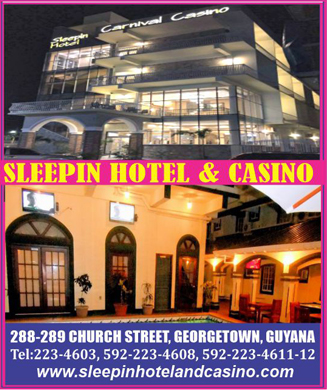AUGUST was the month when Guyanese focused on the historical and cultural development of Afro-Guyanese and we had promised to have an offering on the beginnings of the Congregational Church in Guyana. We did so because the Congregational Church was one of the historic churches in the country, because it was always linked with the upliftment of the underprivileged and in particular, the African section of the Guyanese people, and lastly, because we felt that more young people should learn about this church and should lend support to it.
In Britain and North America, the Congregational Church is linked with the Reformation and Puritanism, but in Guyana, its genesis is its effort to bring Christianity to the enslaved Africans.
Plantation owners were, as a whole, completely against the christianisation of their slaves. They felt that Christianity would cause their slaves to be insubordinate; they opposed the slaves being taught to read and write; they felt that when the slaves were permitted to attend church sessions in the evenings, it badly affected their work performance; and lastly, several slave owners despised the non-Conformist churches such as the Congregationalists and equated them to the much hated Methodists.
There was one plantation owner who stood out from the rest: Hermanus Hilbertus Post, the owner of Pln Le Ressouvenir. Post was a believing Christian and strongly felt that the slaves should be taught the Christian religion and treated humanely. He first unsuccessfully tried to recruit a Moravian missionary and eventually had to settle for one sent by the London Missionary Society (LMS) – Rev John Wray, who arrived in 1808 with specific instructions that he was to confine himself to spiritual ministry. Post bore all the expenses of bringing and maintaining the missionary, and he was stationed at Le Ressouvenir.
In the period between 1808 and 1813, Christianity and Congregationalism became established in the colony.
The planter community slowly accepted that missionaries were not a danger and that they could do good work in educating children. The governmental administration generally supported the Missionary effort, except for two notable members of the Court of Policy, Joseph Beete and F.P. Van Berkel. The chapels which were established at LeRessouvenir, New Amsterdam, Stabroek and Providence were well attended by slaves and free Africans.
When Rev John Wray went to minister in New Amsterdam, he was replaced by Rev John Smith, who arrived in the colony in February 1817 and who went to serve at the Bethel Chapel at Le Ressouvenir.
From the time Smith came to his plantation, relations between the planter class and himself deteriorated. He strongly opposed the slaves being forced to work on Sundays and also their being prevented from attending chapel in the evening, and it was well known that he despised slavery. Some plantation owners also increasingly felt that the missionaries were spies from the Abolitionist Movement in Britain and that their objective was the emancipation of the slaves.
Despite the hostility of the powerful planter class, Smith’s ministry among the slaves was very positive. Many slaves became literate and were able to read the Bible and regarded him as a mentor and friend. Quamina, the Senior Deacon of the chapel and one of the leaders of the rebellion was a close friend of Smith.
When the Demerara Slave Rebellion erupted in 1823, the planter establishment unfairly blamed Smith for being the architect of it and he was arrested, charged, court marshalled and sentenced to death, but with a recommendation for his reprieve. He died in prison before his reprieve arrived from England. Smith was unjustly charged and convicted and became internationally known as the Demerara Martyr. Bethel Chapel was removed from LeRessouvenir to Beterverwagting.
Though the plantation owners strongly disliked the Congregational Church and many would have wished to see it destroyed, it survived because of its grassroots support. In time, with the advent of Emancipation and the rise of the Village Movement when the church assisted the now freedmen and women in establishing villages on former plantations that they were able to purchase, animosity against the church faded away. And as the 19th century moved into the 20th, the church continued to serve the African community and other ethnic groups and did much social and educational work. For example, before the schools were nationalised, the church was responsible for over 20 schools which it had built and staffed.
The church has a remarkable amount of vitality and creativity, exemplified by the most enjoyable vigil of the Bethel Chapel at Beterverwagting, held before Emancipation Day, 2023 and expertly chaired by Guyana’s renowned journalist, Adam Harris. The bicentennial anniversary of the establishment of the church in Guyana invites its Renaissance and the recapturing of its past glory.
`



.jpg)








